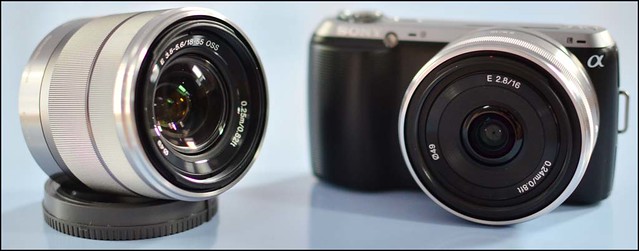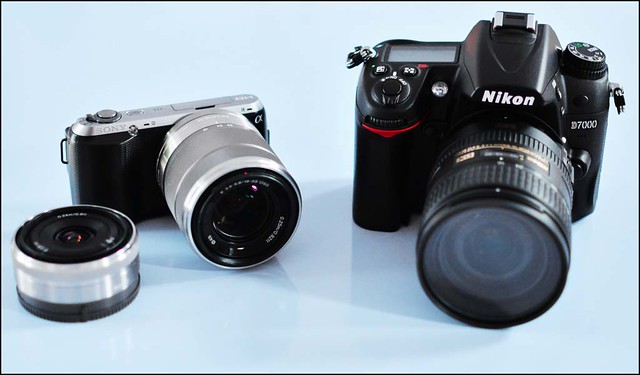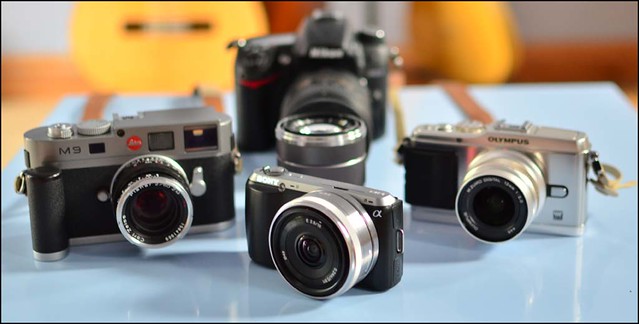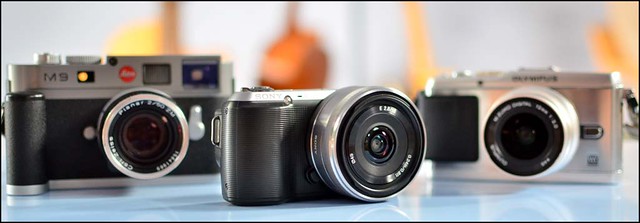This is the first time I've ever bought a camera just to review it. In line with where I'm looking to take this blog in the future, I thought it would be a good idea to look at a camera system that I have had an antipathy towards in the past and see how that plays out.
I did have a NEX-5 and 16mm and sold it after a fortnight. I had problems with the shape and working with it and took a particular dislike to how the menus were laid out. The images seemed fine however, though I felt that apart from the high ISO results, it was really no better than I was getting with m4/3.
DESIGN
The NEX-C3 is pretty much the same as the NEX-5 though even smaller. This time I bought a twin lens kit, from Amazon, with the 18-55mm zoom in addition to the 16mm f/2.8. The zoom is quite big, but thats not necessarily a bad thing, since it actually gives me something to hold on to! I had tried one in my local Jessops store, but didn't take to it at all. However, it seemed a little better when I tried this one today.
Here are a few comparison pictures.
Next to a Nikon D7000 and 16-85mm lens.
Next to a Leica M9.
Next to an Olympus E-P3.
So its very small. What you may not appreciate is just how thin it is. It looks just like a compact point and shoot, but it does actually feel quite decent. Together with the lens it has a very solid feel and certainly doesn't feel as "cheap" as some of the DSLR's that Canon and Nikon have released in the past.
Three plus points immediately. Firstly the menu system is greatly improved. I managed to navigate my way round it quite easily, much to my surprise.
Secondly, it may seem a very small thing, but the battery meter show how much "juice" is left as a %. This is in contrast to the almost useles battery meters that most cameras have.
Thirdly, again much to my surprise, the supplied raw processing software, the snappily titled Image Data Converter is actually quite good. Its simple - (good) Its fast - (even better) and it transfers the files straight into Photoshop with saving them somewhere obscure - (great!)
FOCUS PEAKING
I will go into this more, but I must just mention this. Its a system which uses colour shading to highlight the parts of the picture that are in sharp focus. Its an aid to manual focusing. I tried it with the two lenses and its really very good. It works well and makes the difficult task of manually focusing with a live screen much easier.
This is a short video from Imaging Resource to show you whats going on.
IMAGE QUALITY
I shot a few pictures, processed them from raw and got this feeling of Déjà vu. I've seen images like this before. In fact they are almost identical to what I've been getting off my Nikons. Colour balance, sharpness, overall look. It is of course the same sensor. And the same sensor I've used in the Sony A55 and Pentax K-5 as well as my Nikon D5100 and D7000 cameras.
This of course is it what makes it special. This tiny little thing has one of the best digital camera sensors on the market today. Yes it works well in low light, and yes it produces 46MB high resolution files. I've already said how much I like the results from this sensor and the NEX-C3 wasn't a disappointment.
More tomorrow.
In the meantime, as usual, a bit more camera porn.





